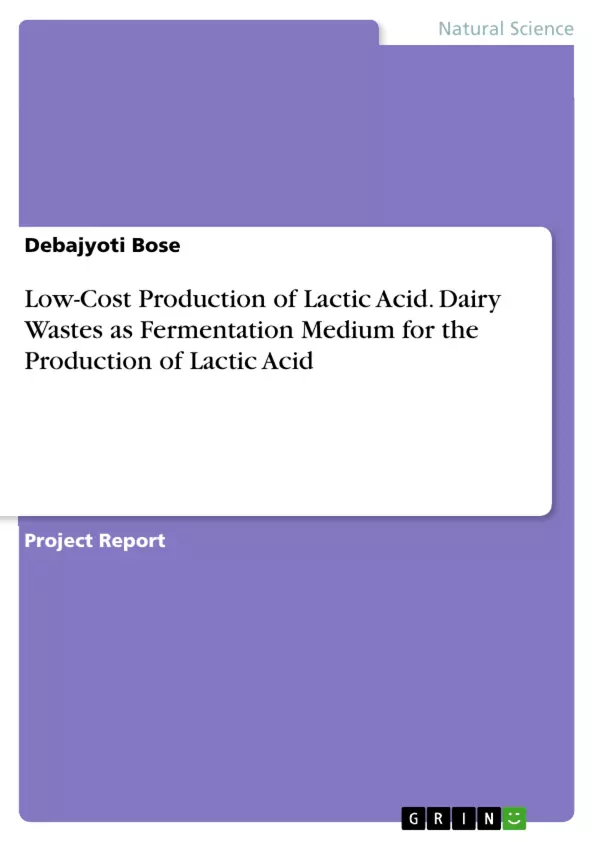The aim of the present research work was to study a low-cost production of Lactic acid by fermentation of a non-conventional medium e.g. cheese whey, while considering milk medium as a standard using Lactococcus lactics.
The effect of different process parameters such as pH of the medium, temperature, inoculums size, age of inoculums and incubation time was monitored to enhance the lactose conversion in cheese whey to lactic acid. Fermentations were performed without any pH control. The optimization of the fermentation conditions resulted in a significant decrease in fermentation time, besides an increase in lactose conversion to lactic acid. The optimized process conditions resulted in high lactose conversion to lactic acid production (0.539%) after an incubation period of 72 hrs at 37°C.
The maximum lactic acid production was 0.767% which was observed when milk media (0.767%) was used as the standard fermentation medium, whereas non-conventional cheese whey medium showed 0.539% lactic acid production at pH 5.5.
Inhaltsverzeichnis (Table of Contents)
- INTRODUCTION
- LITERATURE REVIEW
- MATERIALS & METHODS
- RESULTS
- DISCUSSION
- SUMMARY.
- CONCLUSION.
- FUTURE PROSPECTS.
- REFERENCES
- INDEX
Zielsetzung und Themenschwerpunkte (Objectives and Key Themes)
This research project aims to explore the potential of using cheese whey as a low-cost fermentation medium for the production of lactic acid, a valuable chemical with various applications in the food, pharmaceutical, and chemical industries. The study examines the use of Lactococcus lactis, a bacterium known for its role in dairy product production and preservation, in the fermentation process.
- Utilization of cheese whey as a sustainable and low-cost fermentation medium
- Production of lactic acid through fermentation using Lactococcus lactis
- Optimization of fermentation conditions for efficient lactic acid production
- Exploring the potential of lactic acid for various industrial applications
- Addressing the environmental challenges associated with cheese whey disposal
Zusammenfassung der Kapitel (Chapter Summaries)
- INTRODUCTION: This chapter provides an overview of cheese whey, its composition, and the environmental challenges associated with its disposal. It also highlights the importance of lactic acid and its diverse applications in various industries.
- LITERATURE REVIEW: This chapter reviews existing research on the production of lactic acid from cheese whey using Lactococcus lactis. It explores the various methods, optimization strategies, and applications of lactic acid production.
- MATERIALS & METHODS: This chapter details the materials and experimental procedures used in the research project. It describes the specific strains of Lactococcus lactis used, the fermentation conditions, and the analytical techniques employed.
- RESULTS: This chapter presents the findings of the research project, including data on lactic acid production, fermentation kinetics, and the impact of different variables on the process.
- DISCUSSION: This chapter analyzes and interprets the results obtained in the study. It discusses the significance of the findings in relation to existing knowledge and explores potential future research directions.
Schlüsselwörter (Keywords)
Key terms and concepts central to this research include cheese whey, lactic acid production, Lactococcus lactis, fermentation, sustainable biotechnology, low-cost fermentation medium, industrial applications, and environmental sustainability.
- Quote paper
- Dr. Debajyoti Bose (Author), 2014, Low-Cost Production of Lactic Acid. Dairy Wastes as Fermentation Medium for the Production of Lactic Acid, Munich, GRIN Verlag, https://www.grin.com/document/341901



